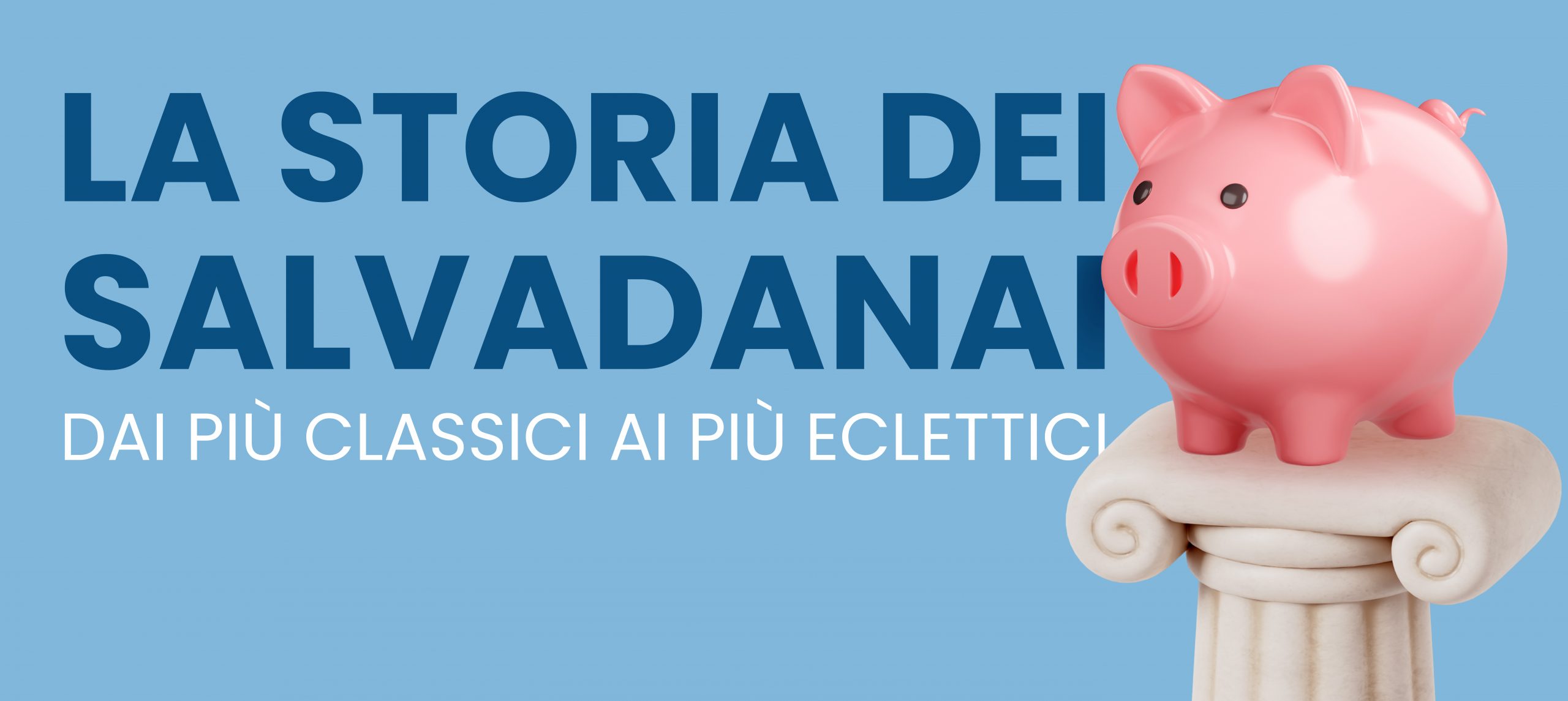
THE HISTORY OF MONEY BOXES: FROM THE MOST CLASSIC TO THE MOST ECLECTIC
First saving lesson: the piggy bank
At least once, when we were children, we all had a piggy bank to jealously store our savings. This is how our parents taught us the correct management of money, pushing us to put aside our pocket money until the (long dreamed of) moment of breaking the piggy bank into pieces to find out how much we had managed to save. A tradition that has been handed down from generation to generation up to the present day. Even today, in fact, the piggy bank continues to be the most used tool for storing personal savings, despite the wide range of technological tools available.
The history of money boxes
The history of money boxes is inevitably intertwined with that of coins and man’s attitude to saving. This is revealed by the very etymology of it, a word composed of “money” and “box”, indicating an object used to collect and store savings. A rather ancient good habit, considering that the first money box in history dates back to the 2nd century BC. and was found near a house in Priene, in Asia Minor, where money had already begun to become an important instrument of the Greek economy. Featuring the shape of a temple, this money box was built exactly like a modern-day model, complete with a hole to insert coins. A characteristic that this object has retained up to the present day, demonstrating the need to have a space where coins can only be inserted, to ensure that these are not easily removed.
Yet, according to another theory, the history of money boxes could date back to the Majapahit Empire, which reigned in Indonesia from 1293 to 1527. It is in this era that Chinese copper coins began to circulate in Southeast Asia, which men collected and stored in terracotta money boxes in the shape of a boar, which has always been a symbol of prosperity.
Why are piggy banks shaped like pigs?
When we Westerners think of a money box, the first image we visualize is inevitably that of a pig. But why? As we talk about in the first episode of the “Casamica” podcast “Casamica” podcast, according to the most accredited hypothesis the shape derives from a material similar to terracotta, pygg, with which dishes and ceramics were produced in 15th century England. When this also began to be used for the production of money boxes, it became customary to refer to these objects with the name “pygg bank”. From here it took very little before the assonance with the word “pig” led artisans to produce piggy banks in the characteristic shape of the pig.
According to another theory, however, the shape of the piggy bank should be linked to the peasant tradition which until a few decades ago saw the pig not only as a reserve of meat and fat available to combat the cold and fatigue, but also as an economic resource. to be used as a bargaining chip in case of need. A little treasure to cherish, then. Precisely for this reason, between the 18th and 19th centuries there was a widespread tendency to create piggy banks to be broken in case of economic emergency, a bit like what happened decades earlier with the actual pig.
But although the shape of the pig is the most iconic, history has given us all types and sizes. To discover the strangest money boxes ever, we invite you to visit the incredible collection of the Museum of Saving. Around 1700 pieces from all over the world, displayed in the ”Saving” room: from animals to means of transport, from books to busts, to cash registers, here you will discover that the piggy bank is just one of the many objects that have taught men the art of saving.
